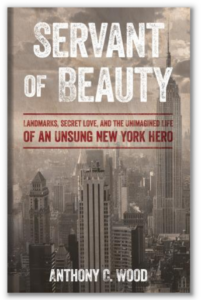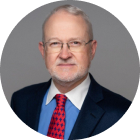Board Member Spotlight: Matt Dellinger
May 30, 2024
By Matt Dellinger
I joined the board of the New York Preservation Archive Project just over a year ago, after meeting the former executive director, Brad Vogel, through a mutual friend. We were at a picnic on Governors Island (one of New York’s recently revitalized historic spaces), and I innocently described the weird little career I had carved out. I had done research and reporting, interviewing and editing, analysis and storytelling, writing and podcasting, and lots of work creating digital archives. Brad told me about his work at the New York Preservation Archive Project, and a connection formed.
Though I am a native midwesterner, New York City has been my chosen home for 27 years. The first eleven of those, I spent at The New Yorker magazine, where I somehow had the responsibility of managing the magazine’s earliest digital efforts. In 2004, I oversaw the creation of The Complete New Yorker digital archive, even driving a truck packed with 80 years of weekly issues to a scanning facility in Kansas City. The archive is now available online as part of a subscription, but in those olden days it launched as a set of DVD-Roms, published by Random House—a physical artifact that itself is now hard to find and worthy of being preserved and archived.
The process of transforming a magazine’s back catalog into a searchable digital archive is arcane and complex enough that doing it once made me something of an expert. Vogue wanted to be next. Then Aperture. Then Esquire. I handled Aviation Week, and finally the venerable Canadian title Maclean’s, in 2016. On a work trip to Toronto, a skeptical Canadian border agent asked why an American needed to do that work. Was there no one in her country who knew how to digitize a magazine? Eh, I said, I’m kind of the guy. Entry approved.
There is a real satisfaction to shepherding dusty paper stacks into new digital discoverability. Because they are rendered as electronic back issues, the ads and cartoons and layouts remain part of the experience. Instead of encountering cold, scraped text floating in the Internet, the reader gets transported into another world. A previous version of the familiar world. Or no, it is a rendering of the old world made new again through context and juxtaposition. The experience is not unlike hustling through Grand Central or walking certain blocks of Greenwich Village.
Preservation can sound like “keeping something old the same.” But more often than not, preservation has the effect of maintaining something old so it can be part of something new. This little koan about old and new was present in a book I wrote, Interstate 69: The Unfinished History of the Last Great American Highway, which tells the story of a long-languishing infrastructure project that will likely never be completed, a new superhighway from Indianapolis to the Texas border with Mexico. Over seven years (thank you to the patient folks at Scribner), I met with people up and down the proposed corridor who had worked for decades to try to build it. I also got to know people who had worked almost as long to try to stop it. On both sides were people you might call preservationists trying to save a place they held dear. Mayors, whose small towns were born in the railroad era, were trying to reconnect their communities economically so they could survive and thrive, while environmentalists and rural-loving people rejected the highway-centric model and hoped to protect what they saw as a slower, more local, and more idyllic way of life.
The story of how America gets built is a story of the people who make it their business to shape the places we inhabit. Not just planners and politicians, but citizens and activists who have something to say about the interplay between commerce and culture, preservation and progress. In the end, I could not bring myself to write a polemic, for or against Interstate 69. To me, the important work was to capture the stories of the passionate people who dedicated their time and energy, successfully or not, to assert what is worth saving.
As a board member of the New York Preservation Archive Project, I welcome the chance to lend support and expertise to an organization dedicated to telling exactly that kind of story.




